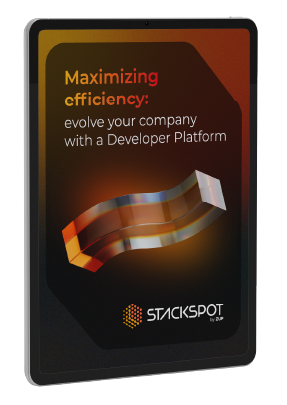Note: This blog post was created by the StackSpot Prompt Engineering team with the support of AI tools. This content underwent rigorous review for technical accuracy, content relevance, and well-written quality before its publication. Enjoy the read!
Legacy systems can often burden organizations, hindering their ability to adapt to rapidly changing technology landscapes. As a CIO, finding ways to modernize Legacy systems quickly and efficiently is crucial. In this blog post, we will provide seven actionable tips to help you navigate the complex process of legacy modernization, enabling you to stay ahead in today’s digital age.
1 – Assess the current state of your legacy systems
Before embarking on any modernization efforts, thoroughly assessing your legacy systems’ current state is essential. This assessment should include a comprehensive understanding of the system’s architecture, dependencies, and limitations. By gaining this insight, you can identify areas that require immediate attention and prioritize your modernization efforts accordingly.
2 – Define clear objectives and a roadmap
To ensure successful modernization, it’s crucial to define clear objectives and create a roadmap that outlines the steps needed to achieve them. This roadmap should include specific milestones, timelines, and resource allocation plans. Having a well-defined strategy in place, you can effectively communicate your vision to stakeholders and ensure everyone is aligned toward achieving the desired outcomes.
Consume innovation, begin transformation
Subscribe to our newsletter to stay updated on the latest best practices for leveraging technology to drive business impact
3 – Embrace cloud technologies
One of the key aspects of modernizing legacy systems is leveraging the power of cloud technologies. Migrating your applications and data to the cloud can provide numerous benefits, including increased scalability, improved security, and reduced infrastructure costs. By embracing cloud technologies, you can future-proof your systems and enable seamless integration with other modern applications.
4 – Adopt microservices architecture
Legacy systems often suffer from monolithic architectures that make them difficult to maintain and update. Adopting a microservices architecture allows you to break down your applications into smaller, independent services that can be developed, deployed, and scaled individually. This approach allows for greater flexibility, agility, and easier maintenance of your systems.
5 – Prioritize security and compliance
When modernizing legacy systems, it’s crucial to prioritize security and compliance. Legacy systems are often more vulnerable to cyber threats and may lack the necessary security controls required in today’s digital landscape. You can safeguard your systems and protect sensitive data by implementing robust security measures and ensuring compliance with industry regulations.
6 – Invest in automation and DevOps practices
Automation and DevOps practices play a vital role in modernizing legacy systems efficiently. Automating repetitive tasks can free up valuable resources and streamline your development processes. Moreover, adopting DevOps principles enables seamless collaboration between development and operations teams, facilitating faster deployment cycles and reducing downtime.
7 – Continuously monitor and iterate
Legacy modernization is not a one-time project but an ongoing process. It’s crucial to establish monitoring mechanisms that allow you to track the performance of your modernized systems continually. By collecting and analyzing relevant data, you can identify areas for improvement and iterate on your modernization efforts, ensuring they remain aligned with your organization’s evolving needs.
In conclusion
Modernizing legacy systems is a complex endeavor that requires careful planning, strategic decision-making, and a relentless commitment to improvement. By following these seven actionable tips, CIOs can navigate the challenges of legacy modernization and empower their organizations to thrive in the digital era. Embrace the power of cloud technologies, adopt a microservices architecture, prioritize security and compliance, invest in automation and DevOps practices, and continuously monitor and iterate to stay ahead in the ever-evolving technological landscape.
Remember, legacy modernization is not just a technical challenge but a strategic opportunity to transform your organization and position it for future success. So, don’t hesitate to take the necessary steps to modernize your legacy systems and embrace the possibilities of the digital age.
Unlock the power of Legacy Modernization with StackSpot!
Are you navigating the intricate maze of legacy modernization? Discover how StackSpot helps with this process.
Seamlessly integrate new-age technologies, benefit from tailored automation, and leverage AI-driven insights to transform your legacy systems. Don’t just modernize… revolutionize!
Dive into StackSpot now and be the catalyst for your company’s digital metamorphosis. Explore StackSpot today!












